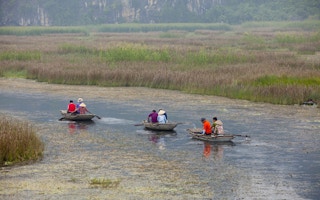Foresters may be guardians of the planet, but they may need to think about more than just the forests to reduce the threats from climate change.
New research suggests that a policy that protects the planet’s forests from fire and the chainsaw must also deliver new ways of stopping the spread of agriculture into other habitats.
The trick − according to a report by Alexander Popp, a senior researcher at the Potsdam Institute for Climate Impact Research, Germany, and colleagues − is to be sure to reduce carbon emissions, rather than just displace them.
The researchers argue in the journal Nature Climate Change that while forest protection schemes could, by 2100, prevent 77 billion tonnes of carbon dioxide from escaping into the atmosphere, the same policies could trigger cropland expansion into areas that were not forested.
This, in turn, could release 96 billion tonnes of CO2 over the same timescale. The researchers call this “carbon leakage”.
“
The results show that the largest benefits for climate change mitigation could be achieved by a full participation of all countries in a forest conservation scheme and the inclusion of other land types with high carbon content, such as wet savannahs
Alexander Popp, senior researcher, Potsdam Institute for Climate Impact Research
Changes in land use
That is because around a tenth of emissions of greenhouse gases (GHGs) arise from changes in land use, and the worst of these changes − in terms of GHG releases − is from tropical forest to agricultural cropland.
So any forest policy focusing on saving emissions must also embrace strategies for using existing farmland more efficiently and productively.
Greenhouse gas emissions from fossil fuel combustion provide the chief cause for alarm about climate change, and a switch to renewable sources such as wind, hydro and solar power remains an important part of potential strategies to reduce the hazards of global warming.
But, in a whole range of ways, agriculture is responsible for about 25 per cent of all emissions, and in a world certain to reach a population of nine billion this century – and possibly 11 billion − the demands and the impacts of agriculture are likely to increase.
The Potsdam scientists warn: “A central challenge is the avoidance of international carbon leakage if forest conservation is not implemented globally.”
But, they add, even global forest conservation schemes will fail to contain such leakage if croplands expand into areas that may not be forested, and are not protected from development in some way.
Overall, in recent decades, the planet’s lands have soaked up more carbon than they have released. Plants take up CO2 from the atmosphere, and although some of them are harvested, and others are burned or decomposed, a proportion of this sequestered carbon stays in the soil.
Woodland, heath, marsh, savannah and even mature meadow and grazing lands have reached some sort of equilibrium: they remain as carbon sinks.
Disturbed equilibrium
But change, in the form of a farmer’s plough, disturbs this equilibrium. Between 1990 and 2010, say the researchers, 12 per cent of all emissions came from changes in land use and changes in the vegetation that covered the land.
So the Potsdam researchers took a hard look at a UN-proposed strategy called REDD –Reduced Emissions from Deforestation and Degradation – which is likely to remain an important part of all future climate treaty negotiations. The conclusion: it is not enough just to preserve forests alone; nations have to look at the bigger picture too.
“The results show that the largest benefits for climate change mitigation could be achieved by a full participation of all countries in a forest conservation scheme and the inclusion of other land types with high carbon content, such as wet savannahs,” Dr Popp says.
“While protecting forests to abate climate change is definitely worthwhile, our results illustrate for the first time that forest protection policies alone will not be enough.”










